Luminosity (bolometric) 0.012 L☉ Magnitude 8.853 Apparent magnitude (V) 8.853 | Luminosity (visual, LV) 0.004 L☉ | |
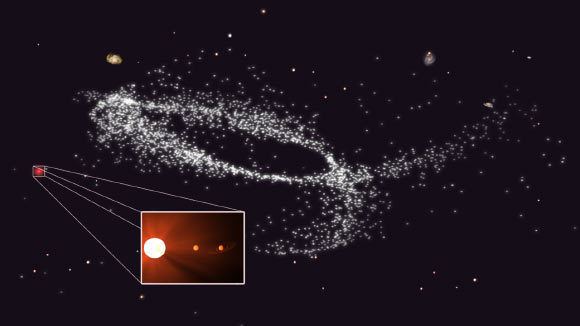 | ||
Similar Kapteyn b, Luyten's Star, Barnard's Star, Lacaille 9352, EZ Aquarii | ||
Kapteyn s star has planets two of the most beautiful images ever space fan news 137
Kapteyn's Star is a class M1 red subdwarf about 12.76 light years from Earth in the southern constellation Pictor; it is the closest halo star to the Solar System. With a magnitude of nearly 9 it is visible through binoculars or a telescope.
Contents
- Kapteyn s star has planets two of the most beautiful images ever space fan news 137
- History of observations
- Characteristics
- Visibility
- Planetary system
- References
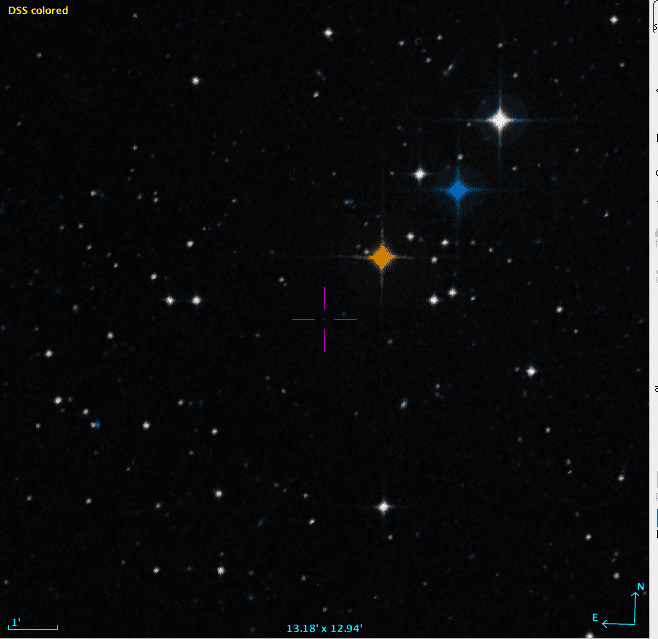
Its diameter is 30% of the Sun's, but its luminosity just 1.2% that of the Sun's. It may have once been part of the globular cluster Omega Centauri, itself a likely dwarf galaxy swallowed up by the Milky Way in the distant past. The discovery of two planets — Kapteyn b and Kapteyn c — was announced in 2014.
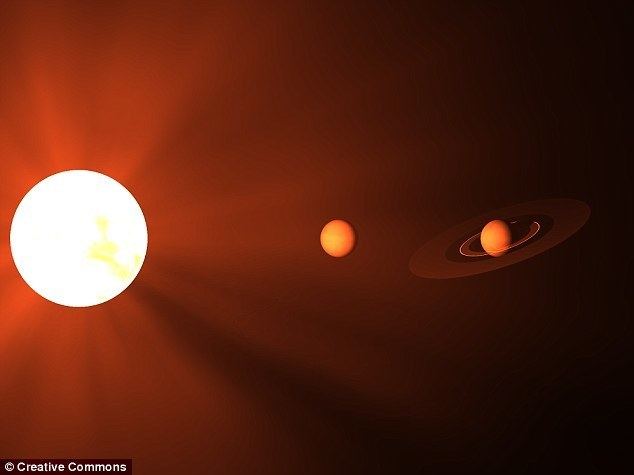
History of observations
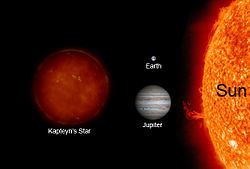
Attention was first drawn to what is now known as Kapteyn's Star by the Dutch astronomer Jacobus Kapteyn in 1898. Under the name CPD-44 612 it was included in the Cape photographic Durchmusterung for the equinox 1875 (-38 to -52) by David Gill and Jacobus Cornelius Kapteyn in 1897. This catalogue was based on Gill's observations from the Cape Observatory in 1885—1889 and was created in collaboration with Kapteyn. While he was reviewing star charts and photographic plates, Kapteyn noted that a star, previously catalogued in 1873 by B.A. Gould as C.Z. V 243, seemed to be missing. However, R.T.A. Innes found an uncatalogued star about 15 arc seconds away from the absent star's position. It became clear that the star had, in fact, a very high proper motion of more than 8 arc seconds per year and had moved significantly in the meantime. Later, CPD-44 612 came to be referred to as Kapteyn's Star although it is clear that equal credit should be accorded to Robert Innes. At the time of its discovery, it had the highest proper motion of any star known, dethroning Groombridge 1830. With the discovery of Barnard's Star in 1916, Kapteyn's Star dropped to second place, where it remains. In 2014, two super-Earth planet candidates in orbit around the star were announced.
Characteristics

Based upon parallax measurements with the Hipparcos astrometry satellite, Kapteyn's Star is at a distance of 12.76 light-years (3.91 parsecs) from the Earth. It came within 7.00 light-years (2.15 parsecs) of the Sun about 10,800 years ago and has been moving away since that time. The star is between one quarter and one third the size and mass of the Sun and has a much cooler effective temperature at about 3500 K, with some disagreement in the exact measurements between different observers. The stellar classification is sdM1, which indicates that it is a subdwarf with a luminosity lower than that of a main-sequence star at the same spectral type of M1. The abundance of elements other than hydrogen and helium, what astronomers term the metallicity, is about 14% of the abundance in the Sun. It is a variable star of the BY Draconis type with the identifier VZ Pictoris. This means that the luminosity of the star changes because of magnetic activity in the chromosphere coupled with rotation moving the resulting star spots into and out of the line of sight with respect to the Earth.
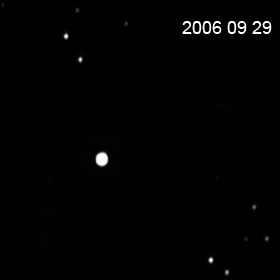
Kapteyn's Star is distinctive in a number of other regards: it has a high radial velocity, orbits the Milky Way retrograde, and is the nearest known halo star to the Sun. It is a member of a moving group of stars that share a common trajectory through space, named the Kapteyn moving group. Based upon their element abundances, these stars may once have been members of Omega Centauri, a globular cluster that is thought to be the remnant of a dwarf galaxy that merged with the Milky Way. During this process, the stars in the group, including Kapteyn's Star, may have been stripped away as tidal debris.
Visibility
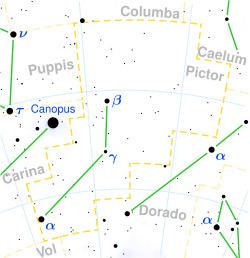
The star is at an apparent magnitude of 9 and is visible through binoculars or a telescope in the constellation of Pictor, in the southern sky, on a clear night.
Planetary system
In 2014, Kapteyn's Star was announced to host two planets, Kapteyn b and Kapteyn c. Kapteyn b is the oldest-known potentially habitable planet, estimated to be 11 billion years old.
The planets are close to a 5:2 period commensurability, but resonances could not be confirmed at the time. Dynamical integration of the orbits suggests that the pair of planets are in a dynamical state called apsidal co-rotation, which usually implies that the system is dynamically stable over long time scales. The announcement of the planetary system was accompanied by a science-fiction short-story, "Sad Kapteyn", written by writer Alastair Reynolds.
